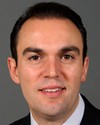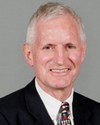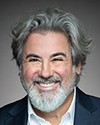I don't think it's actually a question of us being able to.... I'm sure the technical ability to measure smaller amounts is there. I guess I meant we're finding that low doses are potentially more harmful or more significant than we thought they were. There are “windows of vulnerability”, and when a pregnant woman, for instance, is exposed to something is as important as the amount she is exposed to, or almost as important.
What some of the new studies are seeing is something called a U-curve. You would think the lower the dose, the less the problem, and the higher the dose, the more the problem, but we're actually seeing sometimes that low doses can cause problems at the molecular level that aren't caused by higher doses...and then cause it again. It's very confusing for people.
We already know that with cancer-causing things there is what we call “no threshold” for a carcinogen. Small doses of cancer-causing things at the wrong time can kick off a cancer. So we need to do what we can to get anything that's carcinogenic out of the system.
For a lot of the other things that are developmental or reproductive, part of the difficulty in being able to do the cause and effect sometimes is the lag time between exposure and when the effects happen. That is why we tend to support the precautionary approach that says we shouldn't be exposing people to these things when we don't need to.
As much as air pollution is clear and easy for us now, if someone has an asthma attack, it's harder for us to make the link to cancer, learning disabilities, an increase in autism, and those kinds of things further down the road. So we need to act in a preventative manner to make sure that those problems aren't related to environmental contamination.




